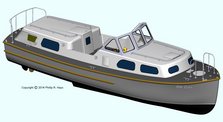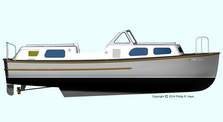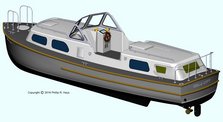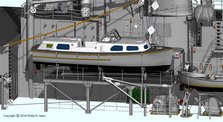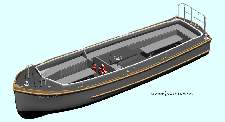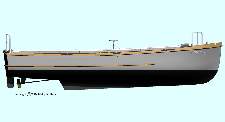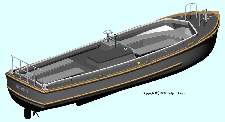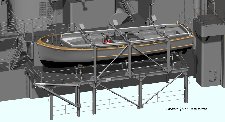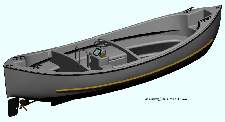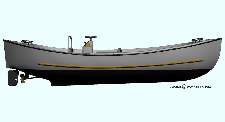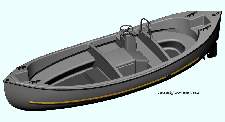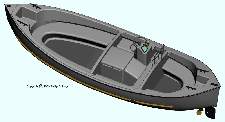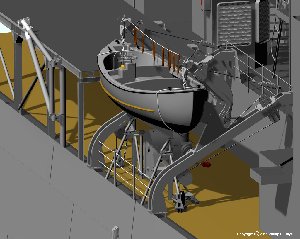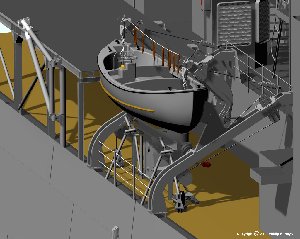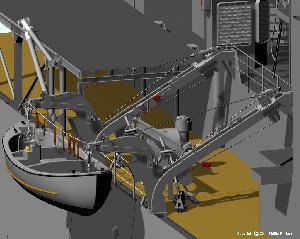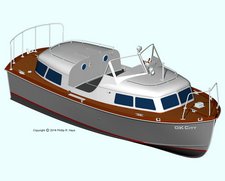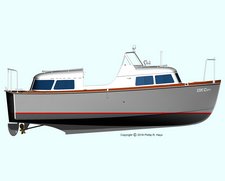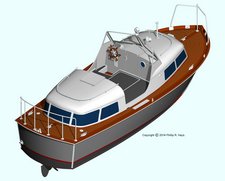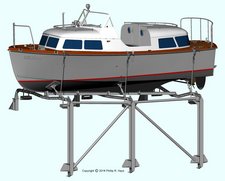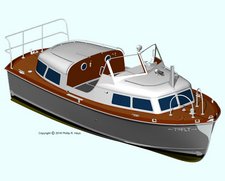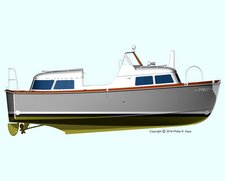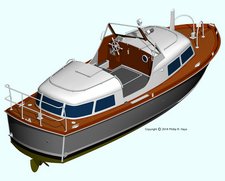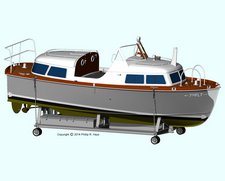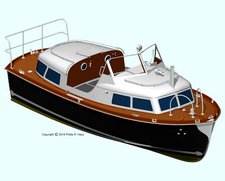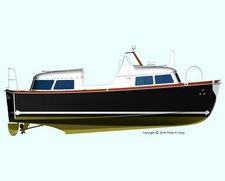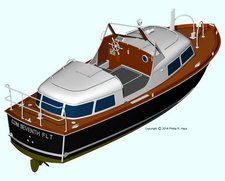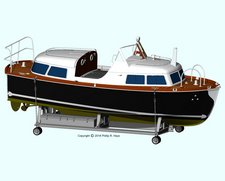The ship carried four types of boats. Each was a modeling project in itself. The complement changed over time, from nine boats in the early 1960s to six boats by the 1970s. The number was decreased to reduce topside weight. The original large two tiered boat davits port and starboard each carried a 26 foot motor whale boat and a 28 foot personnel boat. These large davits were eliminated on the Oklahoma City to reduce topside weight. A smaller double arm trackway boat davit was installed on the starboard side for launching the motor whale boat. Two 40 foot Utility Boats were eliminated from the boat nests, one each port and starboard. Only the 40 foot Personnel Boat remained to starboard. On the port boat deck a 28 foot Personnel Boat was nested above a 40 foot Utility Boat. Two more 28 foot Personnel Boats were carried on portable boat cradles on top of the missile house.
Over time the boats were replaced with newer versions. The Mark numbers shown here are what were aboard in 1971.
Mk 4 40 Foot Personnel Boat
The largest boat was the 40 foot Personnel Boat. It was used to ferry personnel between the ship and shore during inclement weather. It was stowed on the starboard boat deck just aft of the motor whaleboat.
Mk 2 40 Foot Utility Boat
The 40 foot Utility Boat was most often used to ferry liberty parties between ship and shore. The middle benches could be folded and moved aside to allow the boat to be used for hauling cargo. It was sometimes used to transfer furniture and other personal effects purchased in liberty ports back to the ship. It was stowed on the port boat deck, with the 28 foot personnel boat nested above it.
Mk 10 26 Foot Motor Whale Boat
The motor whale boat was the general purpose boat that got the most use. It was used to transfer personnel and materials between ships and shore. It was the primary means for recovery of men overboard and small objects in the water.
The boat was stored on gravity davits on the starboard side amidships (left). To launch the boat the first step was to lower the boat support under the boat and remove the cables that prevent the boat from swinging as the ship rolls (center). Then the latches were released and the support arms rolled down the trackway and swung the boat over the side (right). The boat was then lowered to the water with the motor whaleboat winch.
Mk 6 28 Foot Personnel Boats
The ship carried up to three of these boats. The ship did not always carry the Admiral's barge and the 7th Fleet Staff boat. Sometimes it carried one or the other, sometimes both boats, and occasionally neither.
Captain's Gig
The Captain's gig was a standard Mk 6 boat with little extra trim. It carried the Captain to and from the ship, and occasionally served to carry other personnel. It was nested above the 40 foot utility boat on the port boat deck.
7th Fleet Staff Boat
The 7th Fleet Staff boat was tricked out a bit more than the Captain's gig, with a more chrome and extra hand rails. The boat carried the 7th Fleet Chief-of Staff and other 7th Fleet personnel. It was stowed on a wheeled boat cradle that was positioned on top of the missile house port side aft.
Admiral's Barge
The Admiral's Barge had more fancy chrome and fittings than the other two boats. It carried the Commander Seventh Fleet. It was was stowed in a wheeled boat cradle that was positioned on top of the missile house starboard side aft.
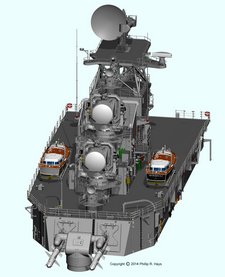
When these boats were needed they were moved using cables pulled by the snaking winches. They were rolled to the forward end of the missile house. From there the boats could be lifted from their cradles using the booms on the king posts and then lowered into the water. Boat winches under the boat decks provided the lifting power.
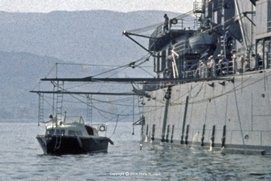
When any of the ship's boats were placed in the water they were tied up with lines attached to boat booms that swung out from the sides of the ship. Boat crews would walk out on these booms and climb down rope ladders to get into the boats.
Passengers boarded the boats from accommodation ladders suspended from the sides of the ship. The OK City had two accommodation ladders that could be rigged forward outboard the 6"/47 turret or aft at the forward end of the missile house. The ladders could be rigged either to port or to starboard.

